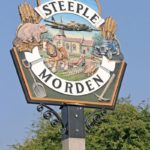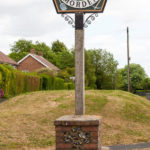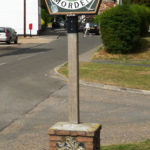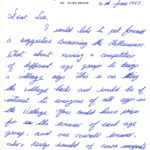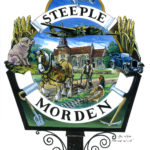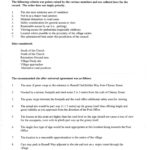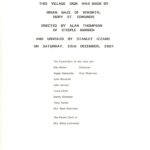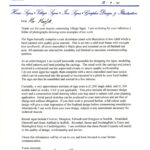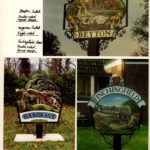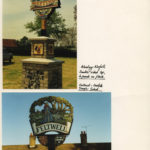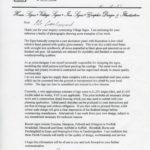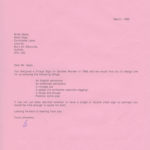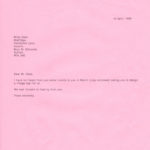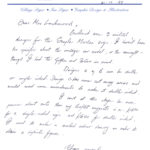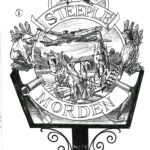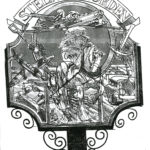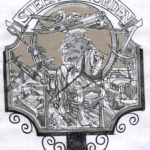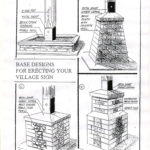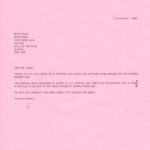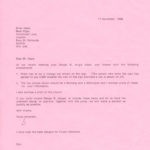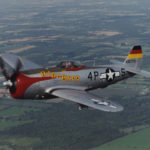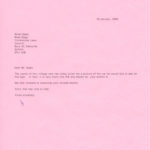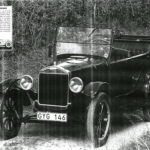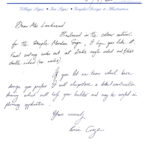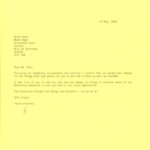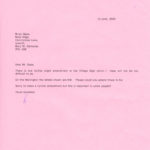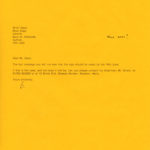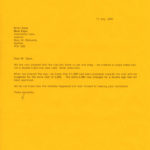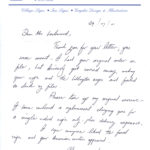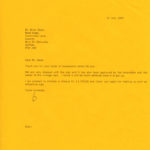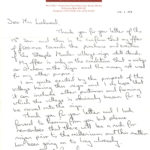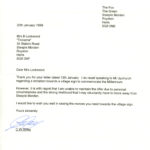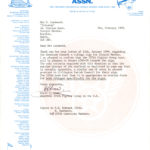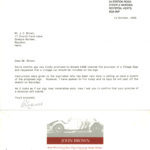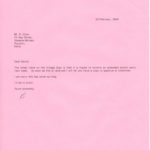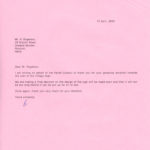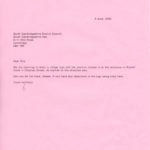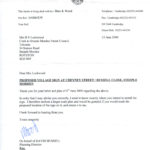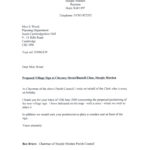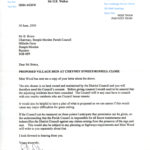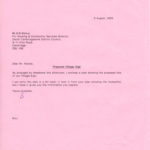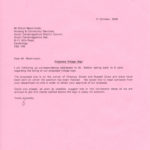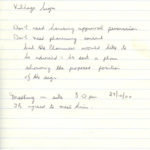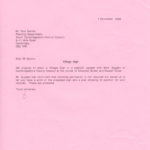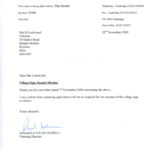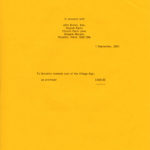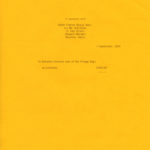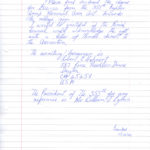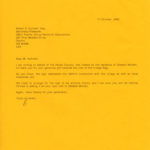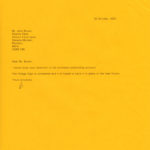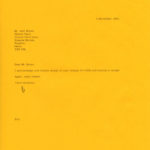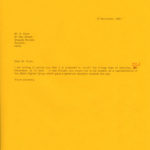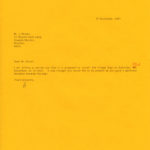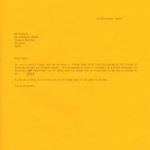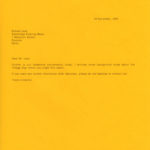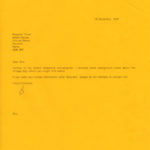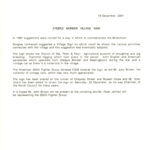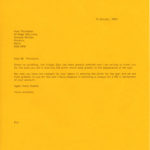Village Sign
Dougie had an idea
In June 1997, a parishioner, Douglas Lockwood wrote to the Parish Council and suggested that the Millennium should be marked by the erection of a Village Sign. Four and half years later the new Village Sign was unveiled; on 22 December 2001 to be precise.
Brian Gaze of Ixworth, Suffolk was chosen as the designer of the proposed sign, as he had previously designed the Guilden Morden Village Sign in 1995. The design brief for the Steeple Morden sign, as supplied to him by the Parish Council in March 1999, was quite sparse. Tthe sign was to incorporate:
An English aeroplane, an American aeroplane, a vintage car, a spade (to symbolise coprolite digging), a horse and plough and possibly some pigs. It was undecided as to whether the sign should be single or double sided.
Interpreting the Design Brief
Those symbols can be interpreted as follows:
The English aeroplane references RAF Steeple Morden, which became operational in April 1940, as an auxiliary airfield to Bassingbourn. No 11 Operational Training Unit flew Wellington bombers from both airfields up to October 1942 when Steeple Morden became home to No 17 Operational Training Unit, which flew Blenheim light bombers. The bomber on the sign is a Wellington, although the Blenheim was also considered. In April 1943 the RAF was replaced by the United States Airforce.
The USAF 355th Fighter Wing arrived with Republican P-47 Thunderbolts and converted to North American P-51 Mustangs in March 1944, flying from Steeple Morden until they left for Germany in July 1945. The American aeroplane on the sign is a Mustang.
The vintage car was to acknowledge the presence of a classic car business based in the village at that time. As the Clerk explained to the designer in a further briefing in December 1999 “There has to be a vintage car on the sign. The person who owns the cars has agreed to pay £500 towards the cost of the sign provided a car is shown on it!!”.
The horse and plough are there to represent agriculture as the main economic activity in the parish for many centuries and underlining the key part played by horses for much of that time. The heads of wheat witness the crop gathered as a result of the ploughman’s labour with his trusty horse.
The pigs became a single large white pig on the sign, which alludes to the famous Wyndmere Herd of Large Blacks! Owned by Ernie Pepper and housed in the 1950s and early 60s at Wyndmere Farm, Ashwell Road, the herd did include white Swedish Landrace and large Whites, which were mainly boars used to cross with the Large Black sows.
The spade was joined by a pick axe to symbolise the digging of coprolites in the north of the parish, which took place from the 1860s and into the 1880s. Coprolites were phosphatic nodules formed from fossils from many species, which when ground up made an excellent agricultural fertilizer. Coprolites are not dinosaur pooh as often stated. Whaddon poor souls have a dinosaur on their village sign, in that mistaken belief.
It appears it was the designer’s imagination that added the Church as the centre of the village and a cock pheasant, as a motif of rural life.
The designer worked up three designs, which are illustrated in the gallery below. From A, B & C the design chosen was B and it was to be single sided. At the head of this page is the final art work supplied by the designer, to which he made some modifications as he created the actual sign. He was given the go-ahead to make the sign in May 2000.
The Practicalities
The Council were concerned as to how the sign would be funded and sought donations from local businesses and other interested bodies. A double sided sign was quoted at £1650 and single £1250 and there would be the cost of building the plinth and erecting the sign. John Brown, who ran a classic car business in the village offered a contribution of £500, provided the sign included a vintage car. The 355th Fighter Association also offered £500, with the expectation that one of their aeroplanes would also feature. A parishioner, Reg Rogerson (now deceased) also made a “generous donation”, although he appears not to have been invited to the unveiling of the sign.
Various permissions had to be sought, once the spot had been chosen to place the sign, on the corner of |Cheyney Street and Russell Close. No planning or highways objections were made. The land on which the sign stands is owned by the South Cambridgeshire District Council, which gave its agreement subject to a couple of caveats.
When the sign finally arrived, it was found to be double sided, rather than the single sided version ordered. The designer conceded that he might of got carried away as the work progressed and reduced his bill to the single sided price.
Alan Thompson, a local builder constructed the brick plinth and erected the sign, charging only £180 for materials, whilst providing labour free.
The sign was unveiled on 22 December 2001 by Stan Izzard, who had previously been a long serving Parish Councillor and Chairman for many years.
It may have taken time, but the final result was a sign of pleasing proportions and engaging to the eye. The various elements are colourful and sympathetically incorporated within the overall design. Brian Gaze worked up a fine sign from that rather sketchy first brief!
Footnote
This page has been assembled from a folder of papers, labelled Village Sign 1999-2001, in the Parish Council archives. The entire contents of this folder have been digitised.
Elsewhere in the Council Minutes will be record of debates by the Councillors about the sign and financial records. Information from these sources is not currently incorporated in this account. Copyright in the original documents remains with their authors and the Steeple Morden Parish Council and is hereby acknowledged.
Click on image below to view. Click again to enlarge. Drag to view entire image.
Images: Suggestion to Completion
Creative Process from Start to Finish
Practicalities: Funding, Permissions, Construction to Unveiling
Last Updated on March 11, 2023

